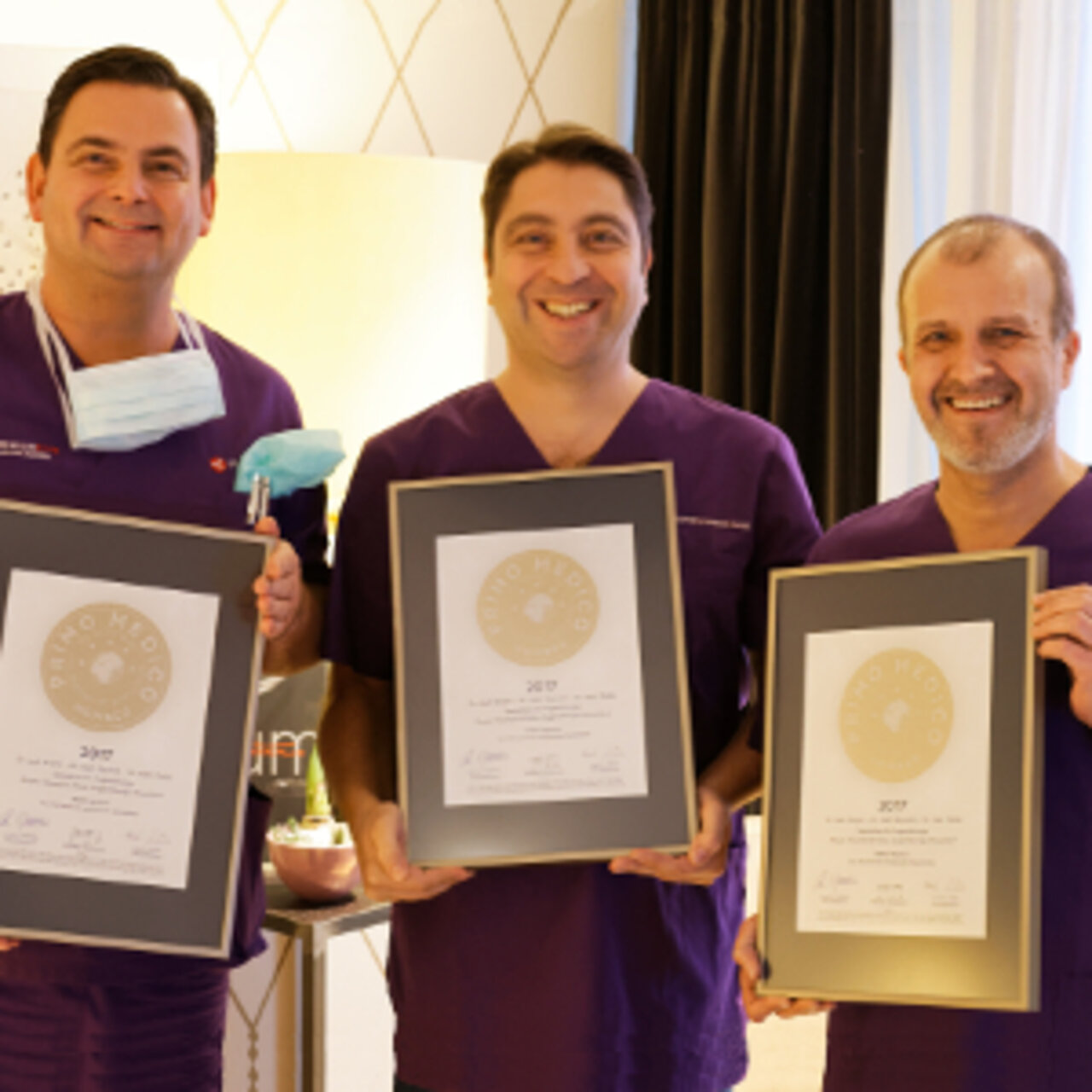Specialists in Epiretinal Gliosis
4 Specialists found
Information About the Field of Epiretinal Gliosis
What Is Epiretinal Gliosis?
Epiretinal gliosis is a disease of the boundary layer between the retina and the vitreous body. Cells and collagens accumulate along this boundary layer, forming a multilayer membrane between the retina and vitreous body. Epiretinal means "on the retina." The cells of the membrane are mainly glial cells of the retina. This is where the name "gliosis" comes from.
The newly formed membrane can contract, causing the underlying retina to wrinkle. The wrinkling around the macula, the central area of the retina, can reduce visual acuity and distort vision. The stage of the disease in which the retina wrinkles is also known as "macular pucker." Pucker is English and means "wrinkling."
Epiretinal gliosis is common. Especially older people are affected. This is because age-related vitreous changes mainly play a role in developing the disease. Sometimes, however, epiretinal gliosis occurs as a result of certain diseases of the retina and vitreous, for example, macular edema, retinal vein occlusion, peripheral retinal foramen, or retinal detachment. It may also develop after cryotherapy or laser therapy of the retina.
How Does Macular Pucker Develop?
The membrane in epiretinal gliosis results from a pathologic change in the boundary surface between the vitreous body and the retina. The vitreous fills the inside of the eyeball with its gel-like transparent substance. The retina attaches to the vitreous body at the back of the eye. A boundary layer connects the vitreous body and retina.
With age, the composition of the vitreous body changes, and the boundary layer between the retina and the vitreous body becomes thicker. This can cause the vitreous body to detach from the retina in the posterior region. Detachment of the vitreous is a normal aging process and is found in at least 60 to 70 percent of people over 70. However, the detachment process can activate cells that settle at the boundary layer and form a membrane on the retina.
Epiretinal gliosis is a slowly progressing disease. There are different stages: stage O is the cellophane maculopathy without folds. Here a cell membrane has formed but not formed folds in the retina yet. In stage 1, cellophane maculopathy with wrinkles is already forming in the retina. In stage 2, all retina layers have wrinkled, and the retina is distorted toward the center of the membrane. This stage is called macular pucker. In advanced disease, a so-called pseudoforamen sometimes develops in the macula area. A hole forms in the epiretinal membrane over the fovea, the visual pit in the center of the macula.
In epiretinal gliosis caused by disease, the membrane is primarily formed by retinal pigment and inflammatory cells from the vitreous body. Patients with this form of epiretinal gliosis are often younger, and the disease progresses more rapidly.
Symptoms and Diagnosis
At the beginning of the disease, most people have no symptoms. As the disease progresses and the retina folds visual acuity decreases. In addition, vision may become distorted. This is called metamorphopsia. The severity of the symptoms varies. Sometimes the vision is only slightly impaired. But severe visual disturbances also occur.
The ophthalmologist can detect epiretinal gliosis by examining the eye with a slit-lamp microscope. With this device, the ophthalmologist sees the back of the eye and the retina through the pupil. Next, the doctor determines visual acuity and the degree of metamorphopsia with the Amsler test to assess visual performance. The Amsler test involves looking at a grid of straight bars. In metamorphopsia, the bars appear bent or distorted.
In most cases, an SD-OCT examination will also be performed. Spectral-domain optical coherence tomography (SD-OCT) is an imaging technique that uses infrared light to measure the retina. SD-OCT can be used to visualize the structures and layers of the retina accurately.
What Can Be Done for Epiretinal Gliosis?
Epiretinal gliosis cannot be treated with medication. However, if epiretinal gliosis causes discomfort, surgical membrane removal is an option. To remove the membrane, a pars plana vitrectomy must be performed. In pars plana vitrectomy, the vitreous body is completely removed. Then the epiretinal membrane is peeled off carefully and as completely as possible. Often, additional peeling of the boundary layer is performed. This is to prevent the membrane from reforming after surgery.
When Does Surgery Have to Be Performed?
The course of the disease can vary greatly. Sometimes gliosis hardly changes for years. However, there are cases of the disease that progress very quickly. If vision is only slightly impaired or the disease progresses slowly, it is possible to wait and see.
In addition to the objectively determined visual acuity, the degree of distorted vision, and the retinal findings, above all, the individual suffering plays an important role in the decision for surgery.
Prognosis and Chances of Recovery in Epiretinal Gliosis
The prognosis after surgery is good. Visual acuity stabilizes or improves with surgery in 70 to 90 percent of people with epiretinal gliosis. Distorted vision also improves in 2/3 of patients. In patients who undergo surgery early and whose visual acuity is not severely compromised at the time of surgery, the prognosis for good vision is better than in those with more advanced disease. However, recovery of visual acuity after surgery can take months. Rarely do complications such as macular edema or retinal detachment occur.
Which Clinics and Doctors Are Specialized?
Every patient who suffers from retinal disease wants the best medical care. Therefore, the patient is wondering where to find the best clinic for epiretinal gliosis in Germany or Switzerland.
For surgery, it is best to go to an eye clinic that specializes in vitreous and retinal surgery. There you will find experienced surgeons who perform the surgery regularly.
We will help you find an expert for your condition. All listed doctors and clinics have been reviewed by us for their outstanding specialization in Epiretinal Gliosis and are awaiting your inquiry or treatment request.
Source Reference:
- Berufsverband der Augenärzte Deutschland, Deutsche Ophthalmologische Gesellschaft und Retinologische Gesellschaft (2020). Stellungnahme zur Entwicklung, Diagnostik und Behandlung der epiretinalen Gliose. Stand Oktober 2020.
- Grehn, F. (2012). Augenheilkunde. 31. überarbeitete Auflage, Springer Verlag



